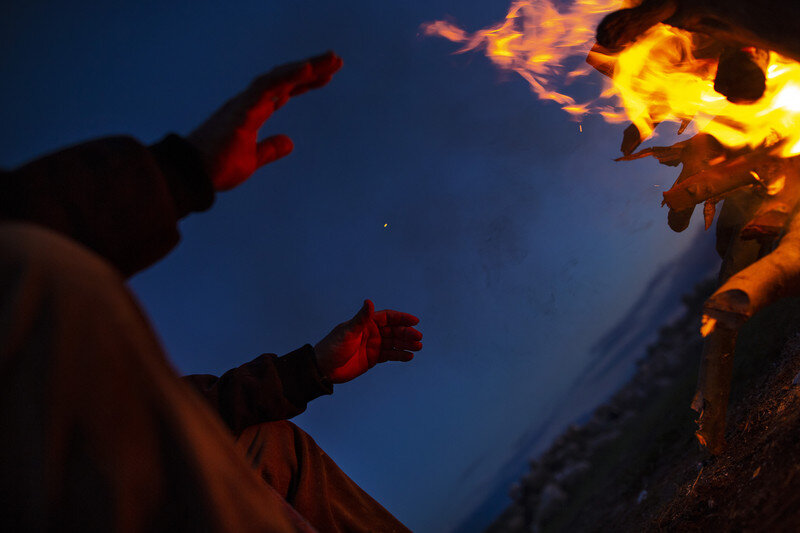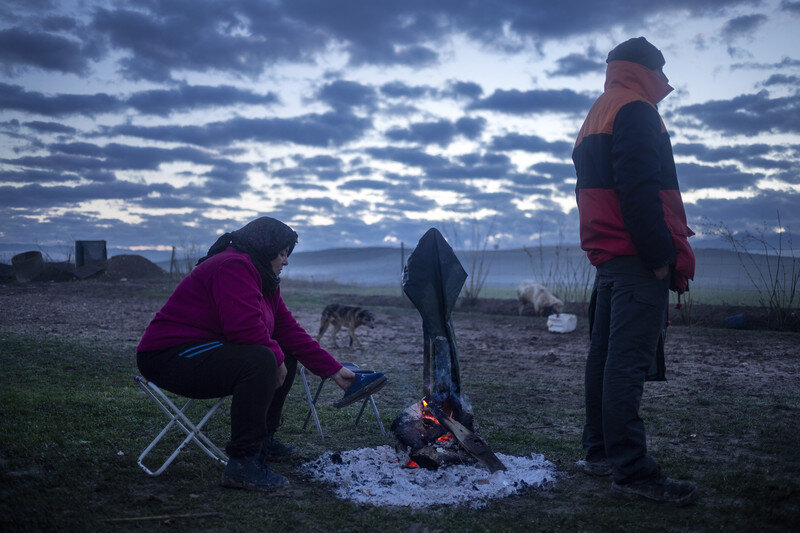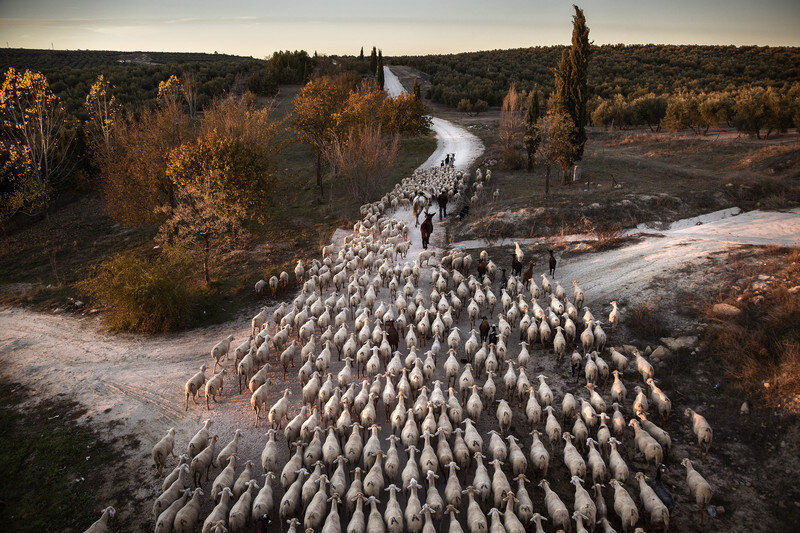90 Varas
Susana GironTranshumant, The story of the last nomads’ families on the heart of Spain and Europe.
This story begins in the year 1,273 and with 90 shepherd canes. 90 shepherd canes were the measure that regulated by royal edict of the Monarch Alfonso X el sabio, back in 1273, the width of the Cañadas Reales for traditional use and the transit of transhumant herds in Spain. And to preserve its regulation, he ordered the creation of the Honorable Council of the Mesta, the first grouping of cattle ranchers in Spain and Europe, with the objective of protecting the roads for the transit of livestock and the livestock trade. In its heyday, in the mid-eighteenth century, 3,750,000 head of cattle passed annually through the canyons and royal trails. Today, there are only 150 transhumant families left and an approximate number of 150,000 head of cattle migrating along these roads full of history.




The Alarcon family is one of the last families who still work as nomadic shepherds in Spain and Europe. In the heart of Europe, the phenomenon of transhumance has survived for centuries: families of shepherds that migrate through the territory by foot with their animals in search of better pastures, climate and living conditions. In Spain, close to 150 families survive as nomad shepherds. Antonio, Maria and their two sons, twice a year, walk close to 200 km during 8 days of hard trip for them and their hundreds of sheep from Fatima (Granada) to Las Navas de San Juan (Jaen). During these journeys, they live in the middle of nature and forests, on the slopes of mountains, enduring hard living conditions and extreme weather along the very ancient Spanish paths known as “Canadas Reales”.
Spain is the only European country that maintains a network of footpaths that exceed 125,000 km. Until the early nineteenth century, 5 million heads of cattle roamed these corridors of biodiversity. Today transhumance in Spain concerns about 150,000 heads of cattle, being threatened by several factors, including the scarcity of public aid and the difficulty for the older generation of shepherds to be replaced. The scarcity of economic resources and the cheapening of the costs for their livestock exploitation, should compensate, in some way, the sacrifice of living in an eternal pilgrimage. The result is that most of families are about to abandon transhumance. Paradoxically, its livestock activity that follows an ancient tradition and historical trails, represents an opportunity for a more ecological and sustainable livestock.
click to view the complete set of images in the archive








